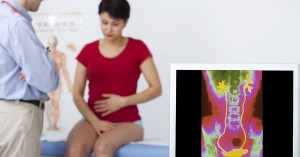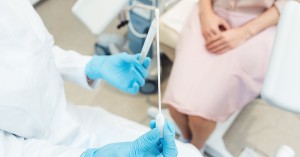Throughout a woman’s life, her body changes. Age transforms the outside as well as the inside of the body and how it functions. Therefore, as these changes occur, risk levels for certain diseases and conditions fluctuate. In an effort to maintain general wellness and prevent illness, there are certain tests and screenings women should have at different stages of their lives. Let’s take a look at the top ten health screenings every woman should have during her lifetime.
1. Breast Cancer Screening
Breast exams that screen for cancer should begin early and continue throughout a woman’s life. Manual clinical exams begin around the age when annual gynecological exams start. Self-exams are recommended throughout the year as well.
When a woman reaches a certain age, a more in-depth screening called a mammogram is performed. The American Cancer Society recommends getting an annual mammogram starting at age 45. Then at 55, women can switch to one every two years. These guidelines can change on an individual basis if there is an increased risk of cancer due to family history.
2. Bone Density Screening
Unless there are indications to perform this screening earlier, women should have their bone density tested beginning at age 65. The frequency of the exams will depend on the results of your previous tests and if you are at greater risk for osteoporosis. This test screens for osteoporosis in which bones become less dense and more brittle, leading to an increased risk of fracture.
3. Pap Smears
Women should get pap smears from age 21 to age 65. The official recommendation is to get a pap smear every three years. However, many OB/GYNs will perform a Pap smear as part of the annual exam. The pap smear screens for cellular changes in the cervix that could indicate cervical cancer. Pelvic exams and screenings for HPV are also done regularly to detect reproductive issues.
4. Colon Cancer Screening
Starting at age 50 you should be screened for colon cancer every five years or so, depending on your risk level and the results of previous tests. Screenings for colon cancer may take the form of a sigmoidoscopy or a colonoscopy.
A sigmoidoscopy is performed by the doctor inserting a lighted tube and camera into the anus to examine the lower, or sigmoid, colon. A colonoscopy uses the same method but a longer tube is used to examine the colon in its entirety.
5. Blood Glucose Tests
You should start getting your blood glucose tested every three years to check for prediabetes and diabetes. This should start around age 45. If you have other risk factors like a family history of the disease, obesity, or are part of a racial or ethnic group that is at greater risk, then the tests should start earlier and be performed more frequently.
6. Blood Pressure Screening
Blood pressure is taken and recorded at the beginning of pretty much every doctor’s appointment you go to. However, if you do not go to a doctor regularly for any other issues, you should make a point of getting screened regularly. If your blood pressure is 120/80 or lower, it should be checked every two years. If it is higher, it should be checked more often. At 140/90, you will be diagnosed with high blood pressure, or hypertension and you should also be screened for diabetes.
7. Cholesterol Tests
Starting at age 20, women should get a cholesterol screening every four to six years. The screening should include testing the levels of cholesterol and triglycerides. This testing gets more important after age 45, as the risk for heart disease increases.
8. Skin Exams
According to the American Cancer Society, you should give your skin a self-examination every other month. By doing these frequent exams, you may catch things that are early signs of skin cancer. Depending on your personal and family history, your risk for skin cancer may be higher than average. A dermatologist can give you guidance about how often you should have a professional exam by a board-certified physician.
9. Eye Exams
Having good vision and healthy eyes is important as part of a woman’s all-around health. Vision tests and eye exams should be performed at least every two years if you have glasses or contacts. However, many doctors recommend having one every year as certain types of vision impairment can change quickly. If you have concerns about your eyes or vision, you should schedule an appointment sooner. These exams will not only detect vision problems but also ocular diseases like cataracts, glaucoma, or chronic dry eye.
10. Dental Exams
Getting regular dental checkups is important to not only the health of your teeth and mouth, but may also possibly prevent other health issues like heart and artery disease. It is recommended to get a dental exam twice a year in six-month intervals.
Going to the dentist regularly is essential for finding oral health issues like tooth decay and gum disease early enough to successfully treat them. Issues that are caught early usually require less invasive treatments and can save your teeth. You only have one set of adult teeth, so taking care of them is crucial. Dental issues can disrupt your life, alter your ability to eat and speak.
Sometimes cost is a barrier to going to the dentist regularly, as not all people have dental coverage. However, if you can manage the cost of regular visits, it will probably be more cost-effective in the long run because as conditions go undiagnosed and untreated, they get more difficult and expensive to treat.
—
GreenValley Ob/Gyn has been serving the Triad for over 70 years. Our seven board-certified OB/GYN physicians and our fantastic staff are dedicated to providing the highest quality healthcare for the women in our community. Along with managing both high and low-risk pregnancies, we strive to care for women throughout all stages of life. Call us at (336) 378-1110 to make an appointment.









